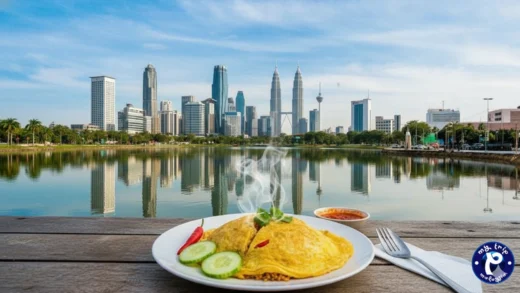Sup Kambing

Malaysian Food
Sup Kambing (Mutton Soup)
Origin
Malay/Indonesian cuisine; popular in Malaysia, Indonesia, and Singapore.
Category
Soup / Main Dish
Appearance
Clear to slightly reddish-brown broth with chunks of mutton, vegetables (carrots, potatoes), and garnished with herbs.
Ingredients
- Mutton (with bones)
- Onions, garlic, ginger
- Tomatoes, carrots, potatoes (optional)
- Spices: black pepper, coriander, cumin, cloves, star anise
- Herbs: cilantro, spring onions
- Salt, optional soy or fish sauce
Preparation
- Blanch mutton to remove impurities.
- Sauté aromatics (onions, garlic, ginger) and spices.
- Add mutton, water, and vegetables; simmer until tender.
- Season and garnish with fresh herbs before serving.
Equipment
Cooking pot or slow cooker, knife, cutting board, ladle.
Variations
- Malay-style: lighter broth, aromatic herbs.
- Indonesian-style: spicier, includes cloves and star anise.
- Singaporean/Chinese-influenced: clear herbal broth, sometimes lighter meat cuts.
Taste
Savory, slightly spicy, rich mutton flavor.
Texture
Tender mutton chunks, soft vegetables, smooth broth.
Aroma
Fragrant herbs and spices mixed with rich meaty scent.
Sound
Gentle simmering or bubbling during cooking.
Cultural Significance
Served during festivals (Hari Raya), weddings, or communal gatherings.
Symbolism
Represents warmth, hospitality, and celebration.
Regional Cuisine
Malay Peninsula, Indonesia, Singapore.
Social Context
Comfort food; also a festive or communal dish.
Nutritional Information
High in protein, moderate fat; calories vary by meat quantity.
Health Benefits
Protein-rich; ginger and garlic may aid digestion.
Dietary Restrictions
Not vegetarian; ensure halal meat if required.
Allergens
Usually none, but check for added soy sauce or seasoning.
Cost
Moderate; depends on mutton price.
Production
Fresh ingredients; slow simmering enhances flavor.
Sustainability
Dependent on sourcing of mutton; grass-fed or local sources preferred.
Availability
Restaurants, street food stalls, home-cooked meals.
History
Traditional Malay celebratory dish, historically tied to communal feasts.
Anecdotes
Many families have secret spice blends passed down generations.
How to Prepare
Follow preparation steps; slow cooking improves tenderness and depth of flavor.
FAQ
- Q: Can lamb be used instead of mutton?
A: Yes, flavor will be milder. - Q: Is it spicy?
A: Varies by recipe; usually mild to medium. - Q: Can it be made in a pressure cooker?
A: Yes, reduces cooking time significantly.





Comments are closed.